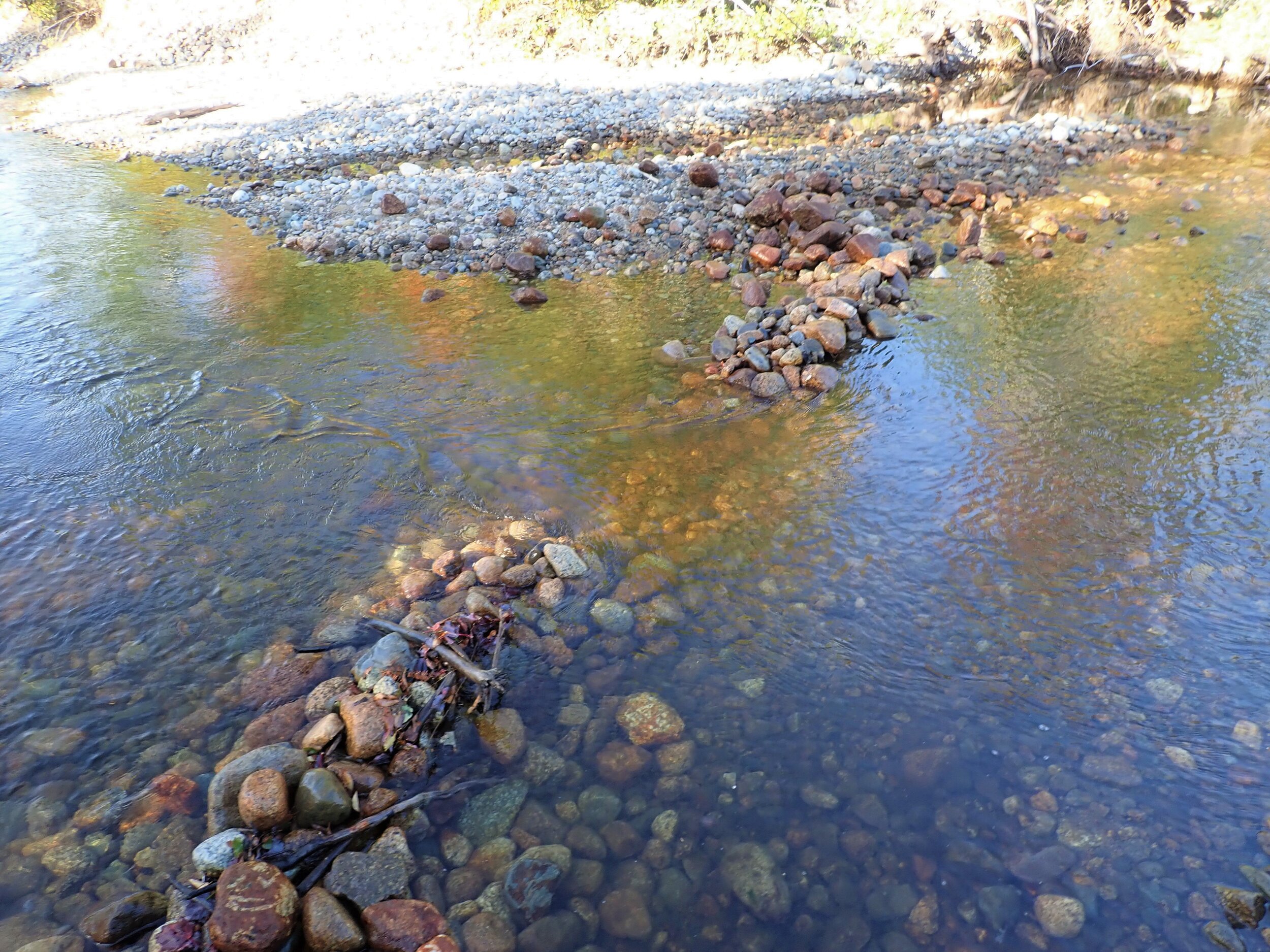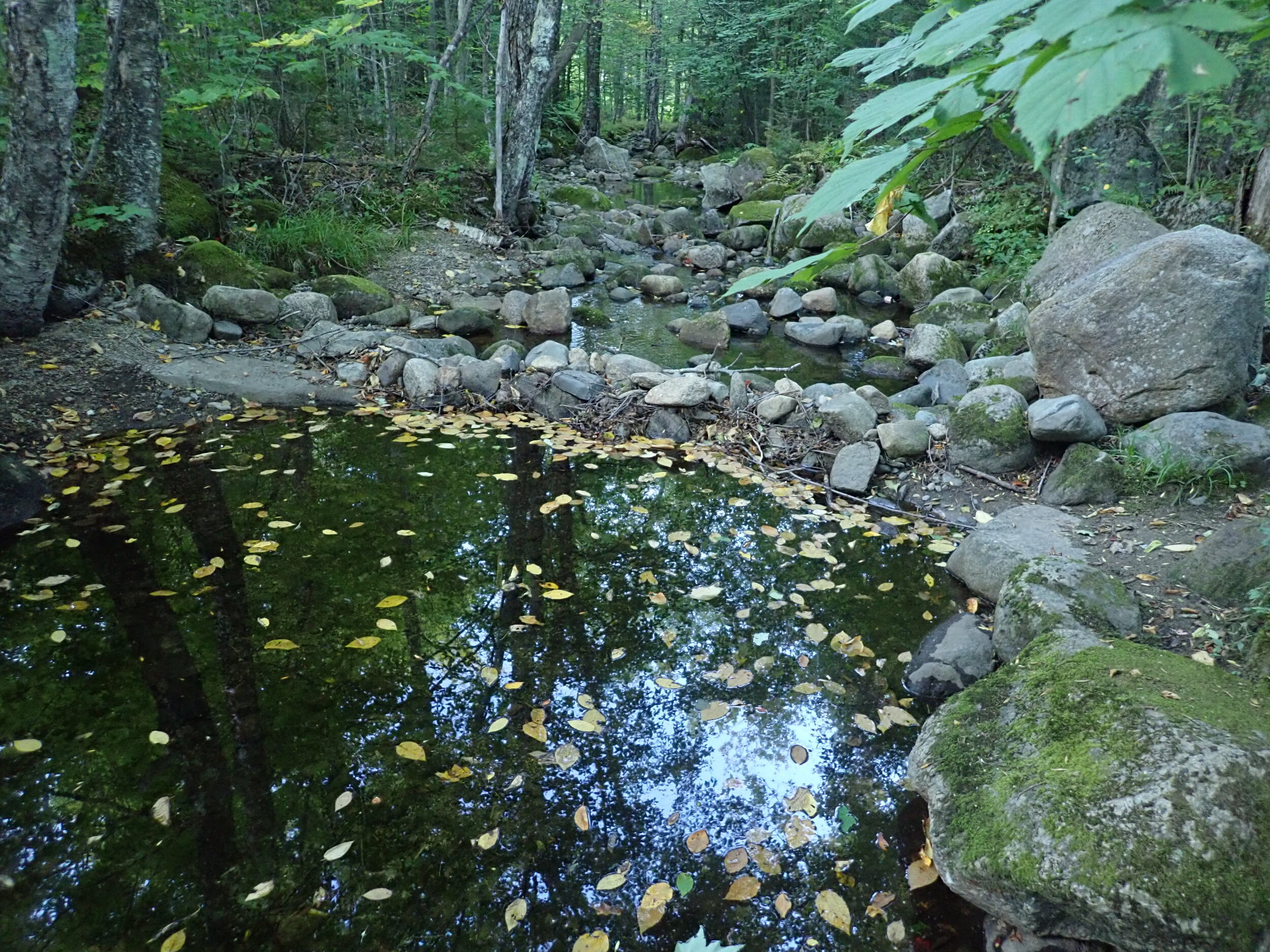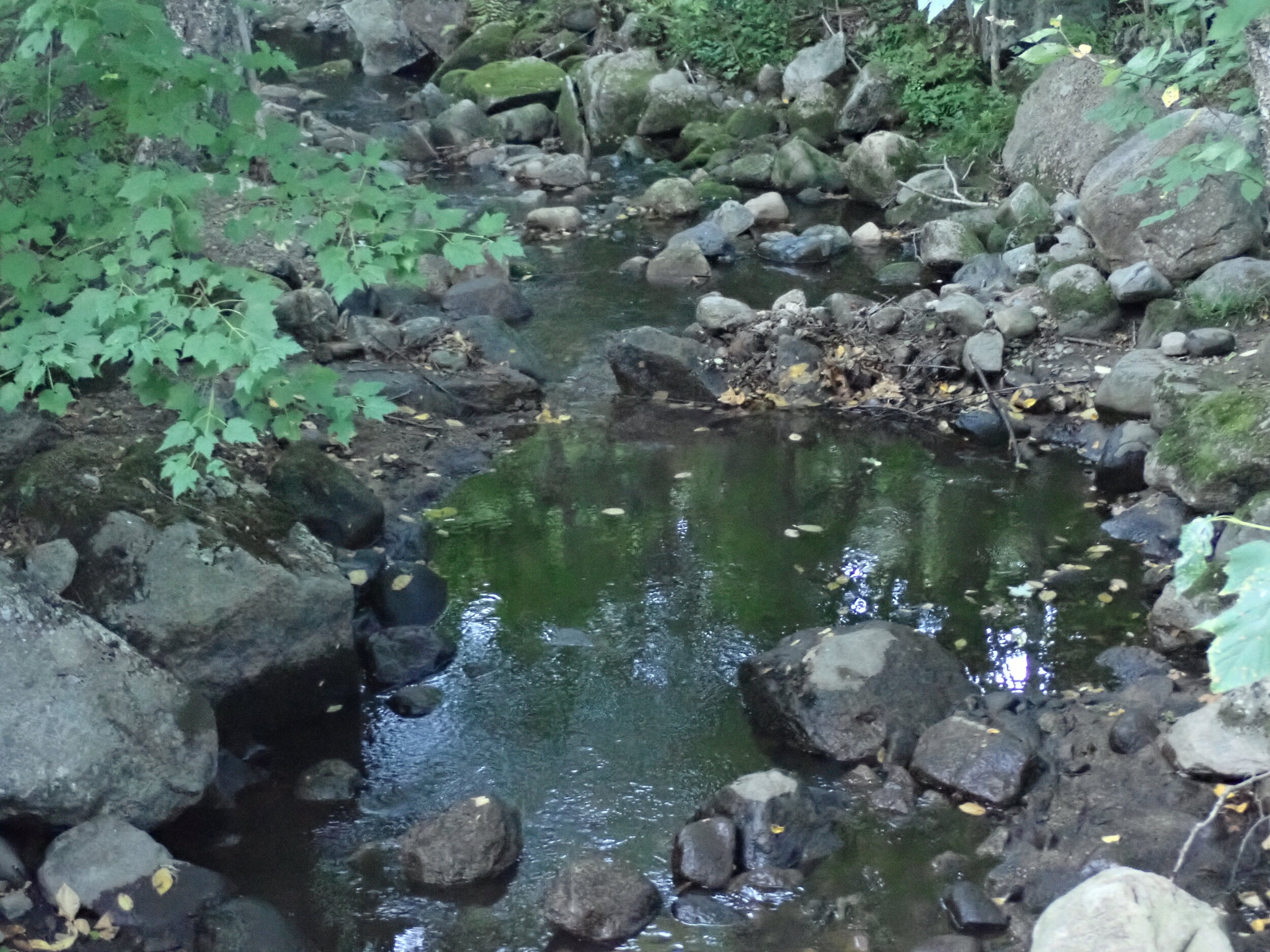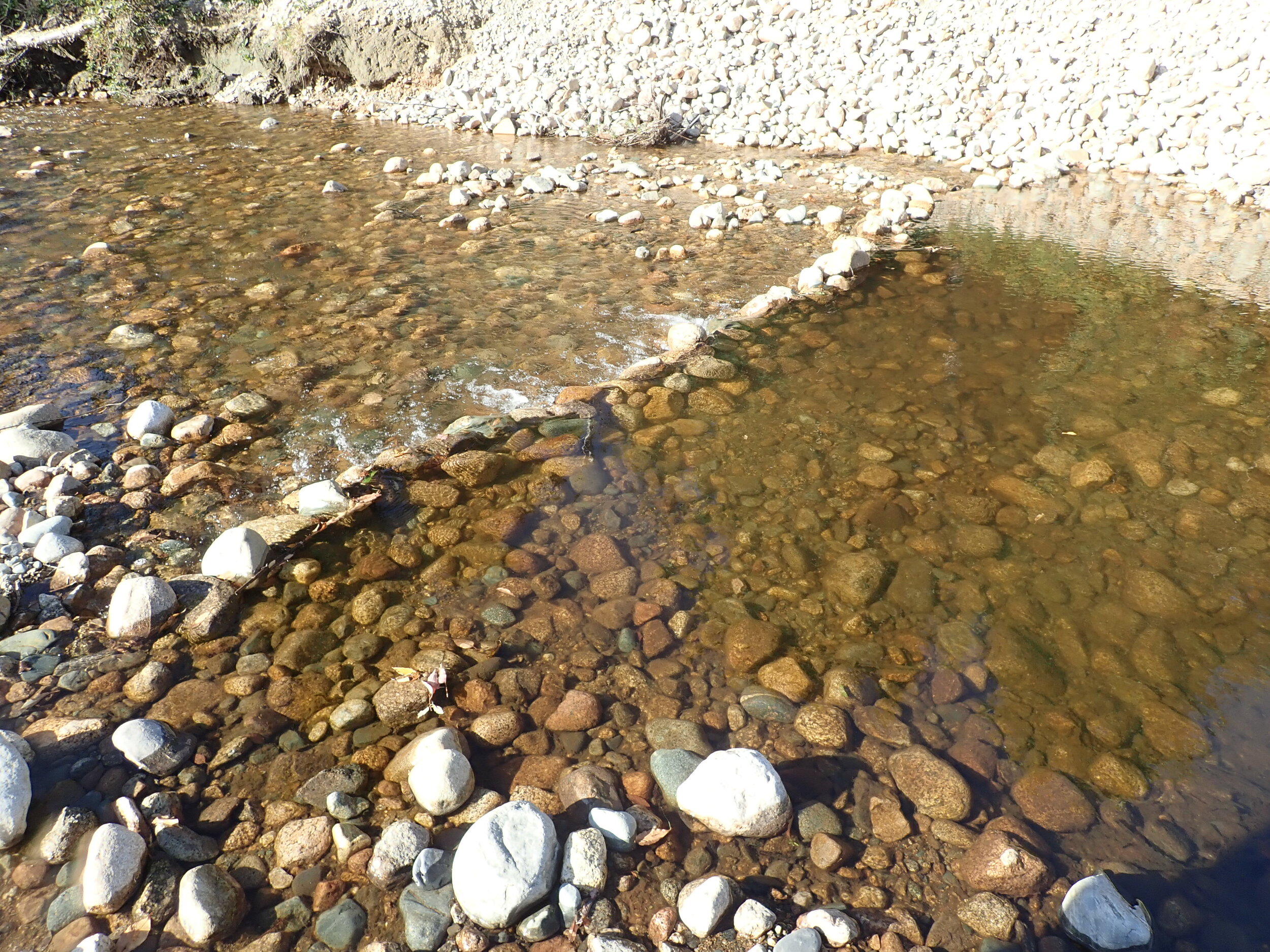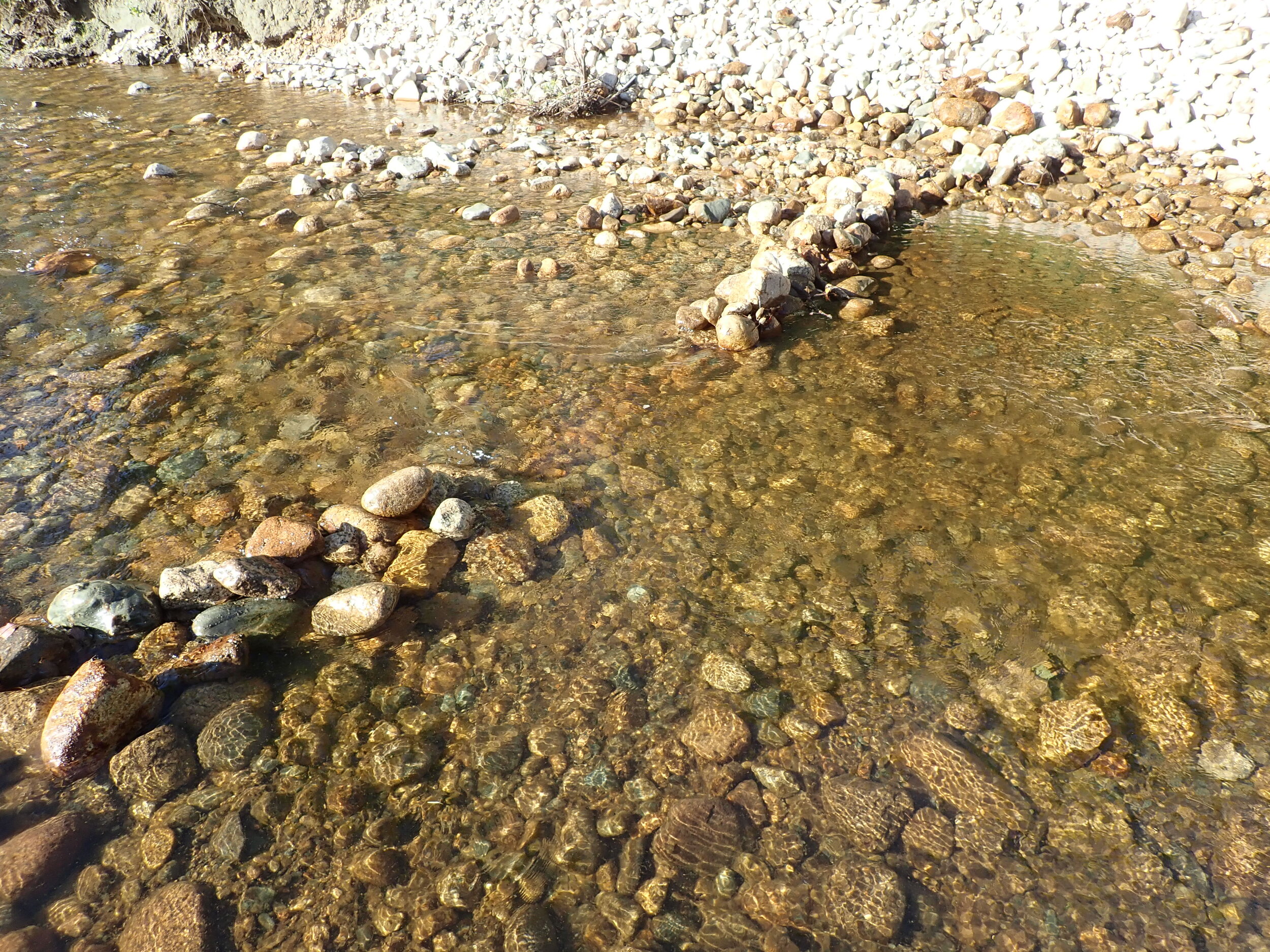NFC Rock Dam Buster Volunteer Campaign
2020 and 2021 were tough years for man and beast when it comes to water. Unfortunately, 2022 was not looking much better until we got some late fall rain. During several small stream fishing trips to the White Mountains region of New Hampshire, NFC board members Emily Bastian, Larry Bastian, and Bob Mallard saw firsthand the impacts of the prolonged drought conditions are having on wild native fish.
While the water temperatures on most small streams were relatively safe for wild native coldwater fish, small rivers like the Ammonoosuc, Ellis, Saco, Wild, etc., were running dangerously warm. Many streams that could provide thermal refuge were a mere trickle, and in late fall 2020 some went intermittent, or completely dry, trapping wild native brook trout fry and other minnows in disconnected pools.
A wild native brook trout stream in the White Mountains region of NH barely flowing. (Bob Mallard)
In addition to the low water levels and warm water, members of NFC encountered a number of informal manmade rock dams left by summer recreationists. These now abandoned dams had filled with leaves, sticks, and other debris and were restricting the flow, impounding water, and preventing fish from moving upstream or downstream to escape low water, and find thermal refuge or spawning habitat.
A manmade rock dam on a wild native brook trout stream in the White Mountains region of NH. The only discernable flow was coming through small gaps between rocks.
“Manmade informal rock dams are harmful to fish and other aquatic wildlife. They can prevent fish from reaching critical thermal refuge and spawning habitat, warm the water, and cause siltation. They can also trap fish, making them vulnerable to angler exploitation and predation. ”
CLICK HERE TO READ ABOUT ROCK DAMS IN MIDCURRENT
The typical dam is built during the summer months by people looking to raise the water level for cooling off, or simply something to do. Most have no idea as to the harm these structures can cause. In the early fall, the dams are abandoned and often remain in place until the spring floods break them up.
As fall progresses, leaves, branches, and other debris collect in these dams, making them even more formidable than when they were first built. Fall-spawning fish such as native brook trout are unable to get past them, and fish looking to move downstream to winter habitat are blocked as well.
A wild native brook trout from a White Mountain stream. (Emily Bastian)
“Building dams is illegal in New Hampshire and subject to fines of up to $100. Refer to New Hampshire Wetlands Statute, RSA-482-A.”
Manmade rock dams, and any stream alterations for that matter, are illegal in many states. While often overlooked, and rarely enforced, there are laws on the books that allow the builders of dams to be fined. The problem is these dams go up fast and unless caught in the act, it’s tough to make a case.
Unfortunately, the laws that make manmade rock dams illegal may also prohibit their removal in some cases. And where private property is involved, there are potential issues in regard to trespass. But like all harmful acts, we have an obligation to intervene where possible, legal, and safe to do so.
NFC Executive Director Bob Mallard dismantling a small but tall fish-blocking rock dam on State property in New Hampshire’s White Mountains region. (Emily Bastian)
Faced with drought conditions, blocked passage, and brook trout spawning season, NFC board members breached a total of 6 dams on 3 rivers and streams over the course of several days. This entailed standing in the water and rolling or carrying one rock at a time, some of which weighed tens of pounds, until an unobstructed flow was resumed and fish could pass.
Since then, NFC members and supporters from multiple states have removed over 25 manmade rock dams.
BEFORE AND AFTER PICTURES
As a result of what we found, and comments we received from others that this is not at all uncommon, and in fact, a nation-wide, and apparently growing problem, NFC is undertaking a volunteer rock dam removal campaign.
We are asking for your help. When you encounter these dams, contact the proper authorities, or where safe and legal to do so, breach them. It doesn’t matter where you live or fish, all informal manmade rock dams are harmful to at least some degree.
Take some before and after pictures and send them to us at info@NativeFishCoalition.org and we’ll post them to our gallery and add your name to our Dam Buster list.
CLICK HERE TO VIEW VOLUNTEER LIST
CLICK HERE TO VIEW PHOTO GALLERY
VOLUNTEERS WHO SUBMIT PICTURES OF DISMANTLED DAMS WILL RECEIVE AN NFC “ROCK DAM BUSTER” DECAL FREE OF CHARGE
NFC National Vice Chair Emily Bastian breaches an informal, and illegal, fish-blocking rock dam in New Hampshire’s White Mountain region. (Bob Mallard)
NFC has also started reaching out to other orgs and state and federal fish and game and environmental protection agencies in regard to informational signage for problem areas. Below are the first two signs, slated for statewide projects in Rhode Island and Pennsylvania.
Members from Rhode Island TU and Protect Rhode Island Brook Trout with first rock dam sign.
Note the rock base on the dam above. There were no signs of human traffic, and there was a lot of beaver activity in the area. Beavers often start a dam by laying a rock foundation, and will use rocks throughout construction. Determining what is natural and what is not, is not always easy, and when in doubt, report it to the proper authority so they can look into it.








